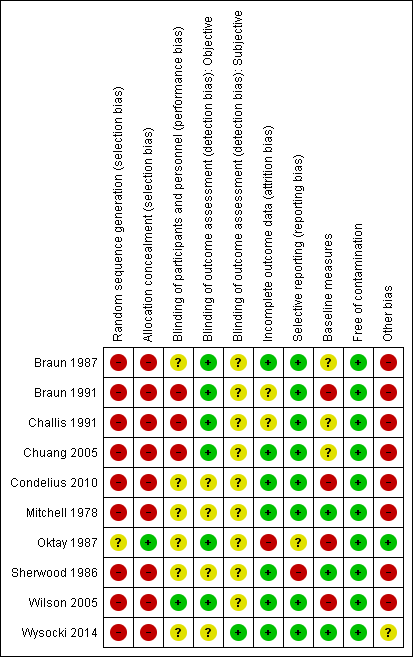Contenido relacionado
Revisiones y protocolos relacionados
Patricia G Mottram, Kaisu Pitkala, Carolyn Lees | 17 octubre 2007
Lesley Brown, Anne Forster, John Young, Tom Crocker, Alex Benham, Peter Langhorne, Day Hospital Group | 23 junio 2015
Oliver J Schofield‐Robinson, Sharon R Lewis, Andrew F Smith, Joanne McPeake, Phil Alderson | 2 noviembre 2018
Rebecca Woodhouse, Jennifer K Burton, Namrata Rana, Yan Ling Pang, Jennie E Lister, Najma Siddiqi | 23 abril 2019
Sasha Shepperd, Daniela C Gonçalves-Bradley, Sharon E Straus, Bee Wee | 15 marzo 2021
Tarun Gera, Dheeraj Shah, Paul Garner, Marty Richardson, Harshpal S Sachdev | 22 junio 2016
Rebecca Whear, Joanna Thompson‐Coon, Morwenna Rogers, Rebecca A Abbott, Lindsey Anderson, Obioha Ukoumunne, Justin Matthews, Victoria A Goodwin, Simon Briscoe, Mark Perry, Ken Stein | 9 abril 2020
Camilla Strøm, Jakob S Stefansson, Maria Louise Fabritius, Lars S Rasmussen, Thomas A Schmidt, Janus C Jakobsen | 13 agosto 2018
Mícheál de Barraa, Claire L Scotta, Neil W Scott, Marie Johnston, Marijn de Bruin, Nancy Nkansah, Christine M Bond, Catriona I Matheson, Pamela Rackow, A. Jess Williams, Margaret C Watson | 4 septiembre 2018
Lilian Dudley, Paul Garner | 6 julio 2011





